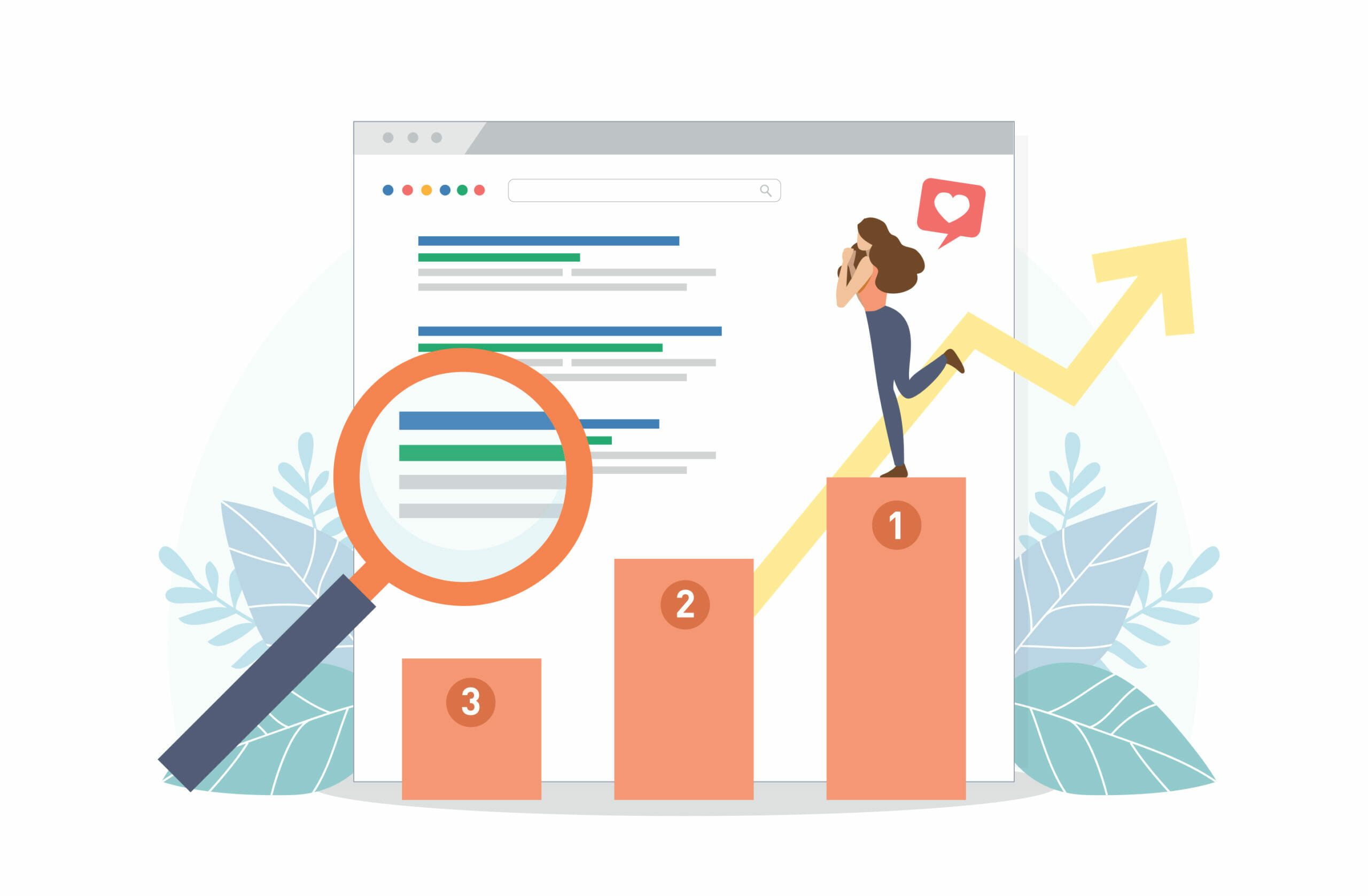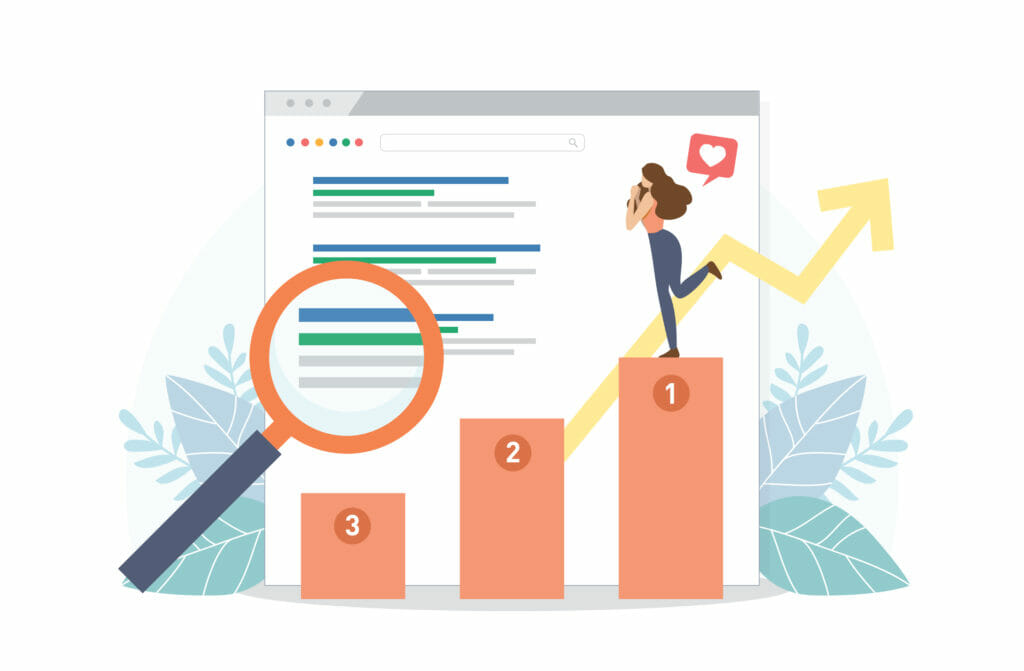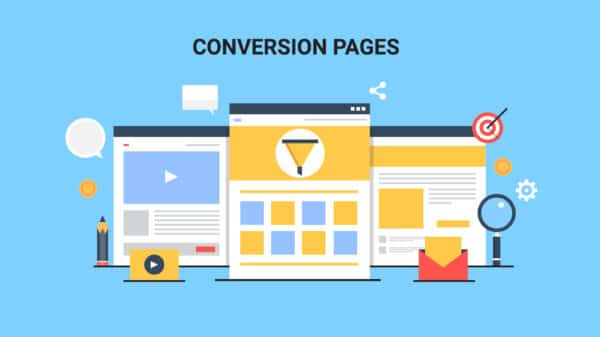Whether you’re at the helm of a nimble small business or steering a colossal Fortune 500 enterprise, the realm of SEO holds unparalleled significance in determining your digital success.
A robust SEO strategy is akin to a guiding star, influencing the ease with which your target audience navigates to your virtual doorstep. An astonishing 75% of internet users restrict their exploration to the first page of search results, underlining the critical nature of your SEO efforts.
1. The Cornerstone: Keywords that Speak Volumes
The bedrock of a formidable SEO strategy lies in the art of keyword selection. By mastering the use of keywords, you can sculpt content that resonates with a broader audience and ushers them to your digital domain. Begin with the fundamental step of identifying both primary and secondary keywords for your webpage.
Primary Keywords: The Main Stage
Your primary keyword takes center stage, encapsulating the essence of your content. Focus on one primary keyword per page. It should seamlessly interweave with your page’s core subject, brand identity, and offerings.
Secondary Keywords: Supporting Cast
Secondary keywords play the supporting role, complementing the main topic. Often more specific than the primary keyword, they address subtopics covered in your content. Skillfully integrate them into your text to maintain a coherent narrative. The Keyword Magic Tool is a valuable resource to unearth these keywords.
2. Crafting the Narrative: Quality Content that Captivates
The alchemy of crafting compelling content lies in originality, comprehensiveness, and perpetuity. Original content is a vessel through which you communicate your unique insights and expertise, establishing a meaningful connection with your audience. The discerning gaze of search engine algorithms, particularly Google’s, is drawn to distinct content. Those who harness the power of ethical SEO practices and dispense reliable original content stand to gain an uptick in search visibility.
Comprehensive content should be your guiding principle. Craft pages that serve as veritable fountains of knowledge on their respective topics. In doing so, you demonstrate to search engines your authority on the subject matter.
The SEO Content Template Tool assumes the role of your content accomplice. It evaluates high-ranking competitors’ content for your target keyword, providing insights into the attributes you must emphasize for optimal performance.
Lastly, there’s the allure of evergreen content. This content type ages like fine wine, remaining relevant and attracting traffic over extended periods. In the realm of inbound marketing, it’s the gift that keeps giving, yielding results even as your attention drifts elsewhere. Craft evergreen content that promises sustained value to readers without necessitating frequent updates, steering clear of transient trends or time-sensitive information.
3. Navigating the Digital Landscape: Optimizing for Search Engines
To create content that resonates with users, ensure you answer their inquiries. A tactic to achieve this is targeting featured snippets, the crown jewels of search results. Featured snippets, perched atop Google’s search pages, are designed to address user queries without necessitating a click-through. They command attention, endearing users with their helpfulness and boosting organic traffic by virtue of their prime position.
A heady mix of internal and external links can elevate your content’s crawlability, enhance user experience, and bolster your site’s credibility. Internal links guide users through your website, granting search engine crawlers insights into your content’s hierarchy. External links, on the other hand, direct users to external authoritative sources, augmenting the depth of your content and establishing your credibility.
4. Designing the Perfect Landing: Optimizing Page Titles and Meta Descriptions
Your page title and meta description are the virtual handshakes extended to your audience. These snippets often dictate whether users click or swipe past your content. The gravity of this limited real estate underscores the need for impactful messaging.
Efficient URL structuring can significantly impact your on-page SEO without necessitating monumental effort. Concise, keyword-infused URLs foster search engine understanding and render your presence in search results more user-friendly.
5. The Need for Speed: Page Load Optimization
Page load speed isn’t solely about user experience; it’s an SEO heavyweight. Slow-loading pages spur users to depart swiftly, inflating bounce rates. Moreover, page load times fall within Google’s Core Web Vitals, thus influencing your search ranking.
Google PageSpeed Insights offers a free tool to assess your desktop and mobile page speed, scored on a scale from zero to 100. Should you detect sluggishness, investigate page elements contributing to delays. Extraneous plugins, for instance, can be jettisoned to expedite load times.
Utilize the Site Audit tool, an exhaustive SEO assistant with over 140 checks for assorted SEO predicaments. Employ it in tandem with PageSpeed Insights for a holistic optimization strategy.
6. Sculpting User Journeys: Internal and External Links
A well-orchestrated ballet of internal and external links can revolutionize your content’s appeal. Internal links shepherd users through your digital labyrinth, enriching their experience and endowing search engines with a roadmap of your content’s tapestry. External links, in contrast, steer users toward credible, authoritative content that complements your narrative.
7. Embracing Visual Panache: Optimizing Graphics
Visual elements are the heartthrobs of the digital realm. However, their charm is incomplete without optimization. Meticulous considerations of image size, file formats, accessibility, and contextual integration are imperative.
8. The Sentinel of Perfection: Regular Site Audits
Conducting regular site audits is akin to maintaining a watchful sentinel over your digital realm. These audits unearth latent issues, from broken links to sluggish load times. Armed with these insights, you can preemptively address them before they mar your site’s performance.
9. The Mirror of Competitors: Learning from Rivals
Competitor analysis is a masterstroke in refining your strategy. By scrutinizing your rivals’ web endeavors, you glean valuable insights into content strategies and audience engagement tactics. Tools like Market Explorer, Traffic Analytics, Organic Research, and Keyword Gap offer a panoramic view of your competitors’ digital dominion.
10. The Unending Quest for Mastery: Continuous Learning
In the dynamic ecosystem of digital marketing, one truth remains unassailable: Google’s algorithm perpetually morphs, reshaping the landscape. Thus, your proficiency in SEO is an ongoing journey, an expedition you must embark upon to maintain your competitive edge. Fortuitously, the vast expanse of resources—blogs, ebooks, podcasts, videos, webinars—affords you the means to remain perpetually abreast of SEO’s shifting tides.
So there you have it—an exhaustive dossier, a compass navigating the intricate seas of SEO. Armed with these strategies, you’re equipped to set sail, steer through algorithmic tempests, and navigate towards the coveted shores of search supremacy.













